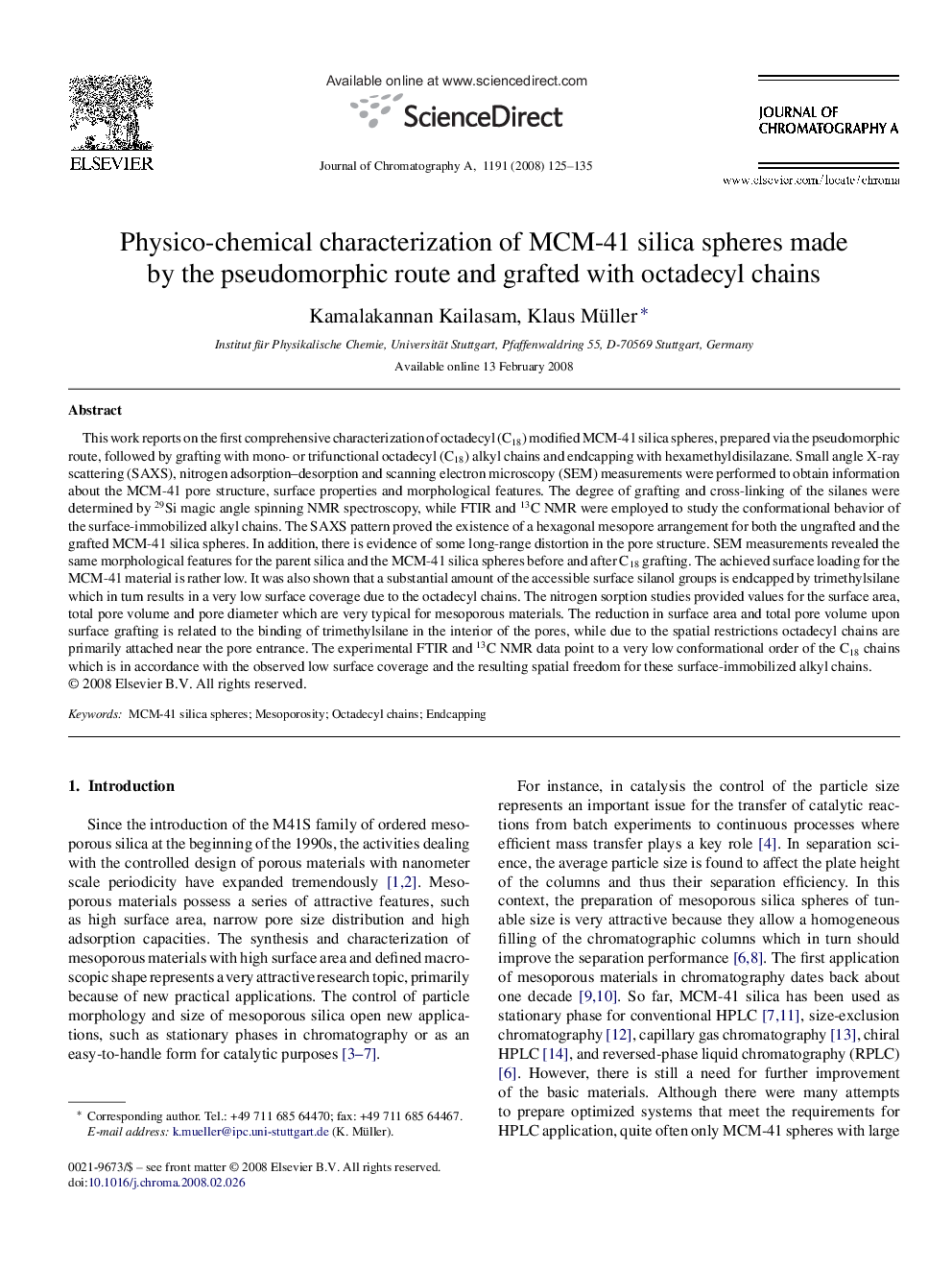| Article ID | Journal | Published Year | Pages | File Type |
|---|---|---|---|---|
| 1205569 | Journal of Chromatography A | 2008 | 11 Pages |
This work reports on the first comprehensive characterization of octadecyl (C18) modified MCM-41 silica spheres, prepared via the pseudomorphic route, followed by grafting with mono- or trifunctional octadecyl (C18) alkyl chains and endcapping with hexamethyldisilazane. Small angle X-ray scattering (SAXS), nitrogen adsorption–desorption and scanning electron microscopy (SEM) measurements were performed to obtain information about the MCM-41 pore structure, surface properties and morphological features. The degree of grafting and cross-linking of the silanes were determined by 29Si magic angle spinning NMR spectroscopy, while FTIR and 13C NMR were employed to study the conformational behavior of the surface-immobilized alkyl chains. The SAXS pattern proved the existence of a hexagonal mesopore arrangement for both the ungrafted and the grafted MCM-41 silica spheres. In addition, there is evidence of some long-range distortion in the pore structure. SEM measurements revealed the same morphological features for the parent silica and the MCM-41 silica spheres before and after C18 grafting. The achieved surface loading for the MCM-41 material is rather low. It was also shown that a substantial amount of the accessible surface silanol groups is endcapped by trimethylsilane which in turn results in a very low surface coverage due to the octadecyl chains. The nitrogen sorption studies provided values for the surface area, total pore volume and pore diameter which are very typical for mesoporous materials. The reduction in surface area and total pore volume upon surface grafting is related to the binding of trimethylsilane in the interior of the pores, while due to the spatial restrictions octadecyl chains are primarily attached near the pore entrance. The experimental FTIR and 13C NMR data point to a very low conformational order of the C18 chains which is in accordance with the observed low surface coverage and the resulting spatial freedom for these surface-immobilized alkyl chains.
